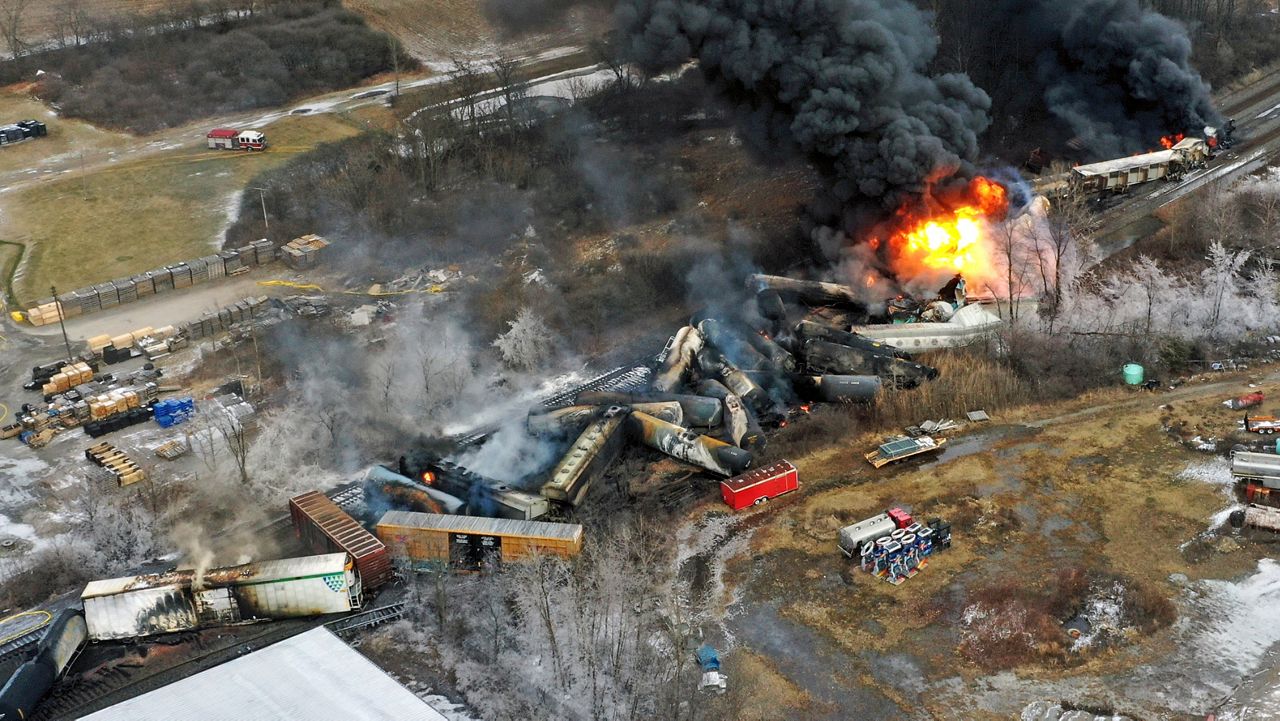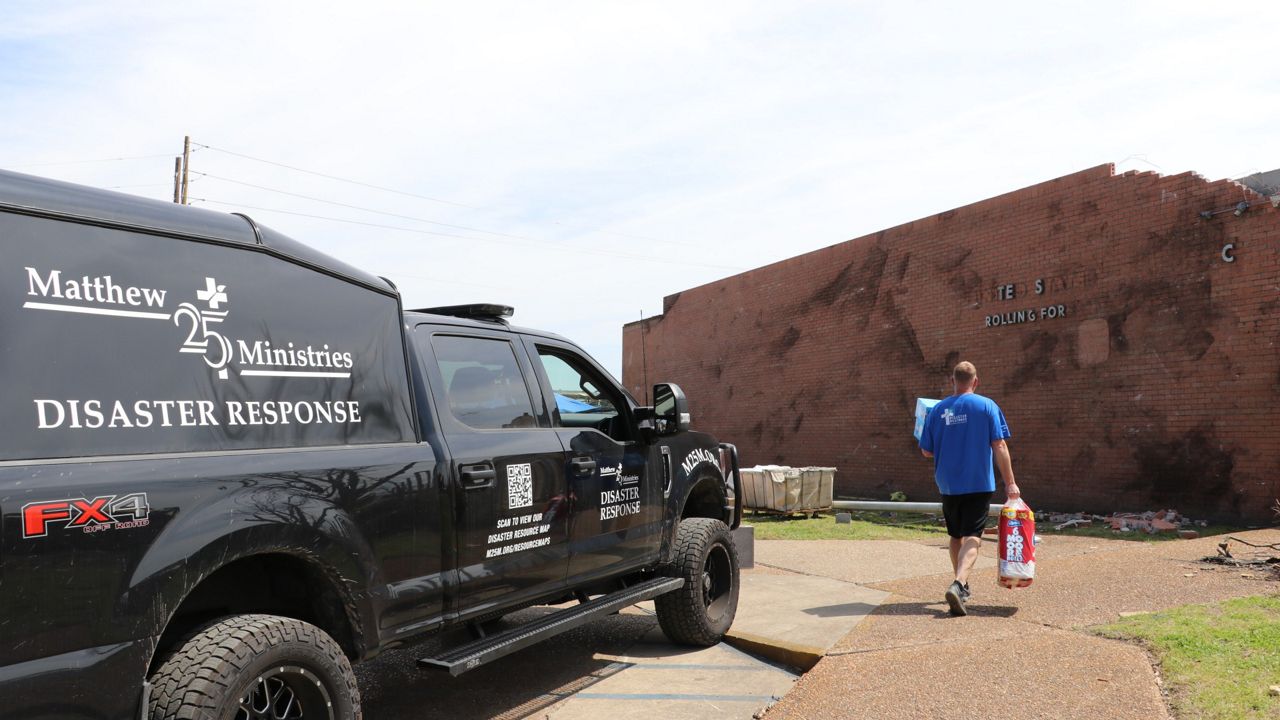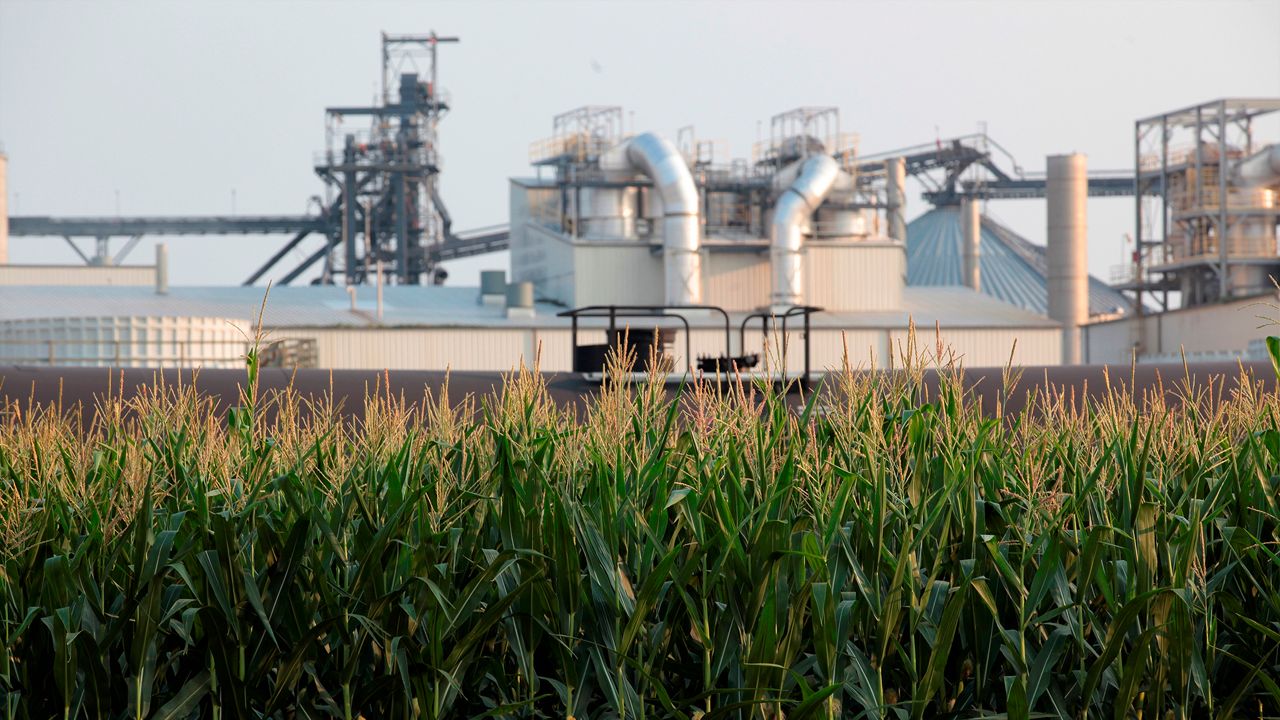CINCINNATI — A low level of hazardous chemicals ended up in the Ohio River because of a train derailment in East Palestine, Ohio, earlier this month. But officials from Greater Cincinnati Water Works are working to reassure residents that faucet water will remain safe to drink.
What You Need To Know
- A low level of hazardous chemicals ended up in the Ohio River because of a train derailment in East Palestine earlier this month
- State and local agencies are monitoring the river movement of the toxins, which remain about 120 to 150 miles from Southwest Ohio
- Officials from Greater Cincinnati Water Works are working to reassure residents that faucet water will remain safe to drink
- Water Works also has a number of processes that make the chemicals "very, very" treatable
About 50 cars, including 10 carrying hazardous materials, derailed Feb. 3 near the Pennsylvania state line in northeast Ohio. No one was injured, according to the Associated Press, but the derailment of the Norfolk Southern-operated train spilled vinyl chloride and butyl acrylate. They’re chemicals used in industrial processes.
Three days after the accident, authorities released and burned vinyl chloride inside five tanker cars, sending hydrogen chloride and the toxic gas phosgene into the air. Officials evacuated many of the roughly 5,000 people who live in the Columbiana County village.
The derailment also resulted in butyl acrylate making its way into the Ohio River, according to a memo sent late last week by Greater Cincinnati Water Works.
But Jeff Swertfeger, the superintendent of water quality and treatment for Water Works, told Spectrum News on Monday samples taken downstream from the derailment showed “incredibly low levels” of the chemical.
The risk of exposure for natural and man-made hazard substances is determined by the Agency for Toxic Substances and Disease Registry, a part of the U.S. Department of Health and Human Services.
Concern about water contamination of butyl acrylate starts when samples reach 560 parts per million, Swertfeger said. He noted the highest reading during testing of the Ohio River this weekend was around 4 parts per million.
“These are extremely low levels we’re talking about here,” Swertfeger said. “We don’t expect any impact on the quality of our drinking water.”
While there’s no expectation of health risk from the incident, Water Works sent the memo to Cincinnati mayor and City Council to “get head of questions,” Swertfeger said.
“We wanted to be proactive about it,” he added. “Given the extensive media coverage, we wanted to reassure everyone that we’re tracking the situation really closely, and we’re able to take care of it.”
Water Works supplies water to more than 240,000 residential and commercial accounts in Cincinnati, most of Hamilton County and parts of Butler and Warren counties in Ohio.
In 2003, the public utility started selling water to Boone County and Florence, Ky., via a pipeline installed under the Ohio River.
Roughly 90% of the water supplied by Water Works comes from the Ohio River.
As of Monday, the spill contaminants were still about 130 to 150 miles upstream of Cincinnati, Swertfeger said. He expects to arrive in the region sometime next week.
But hazardous materials teams from the U.S. Environmental Protection Agency (EPA) and the Ohio EPA responded to the derailment site quickly and took measures to contain contamination, Swertfeger said.
Water Works is currently working with the Ohio EPA, the Ohio River Valley Water Sanitation Commission (ORSANCO), and other water utilities along the river to collect samples and perform additional analyses.
“We’ve done a lot of work this weekend doing treatment-type studies. From what we’ve seen, we can handle this chemical and treat the water very well,” Swertfeger said.
Water Works treats water in several ways. It starts with coagulation, which removes colloids and other debris, Swertfeger said.
The utility then pumps the water through a series of other filters, including a process that uses granular activated carbon. Swertfeger described it as similar to the material used in a water filter on a faucet or to keep an aquarium clean.
Those processes should be “extremely effective and efficient” in removing any traces of butyl acrylate, Swertfeger said. But just in case, Water Works also uses powdered activated carbon — “a kind of crushed up charcoal” — in these types of situations. He said the contaminants stick to the charcoal, making them easy to remove.
Water Works also can shut its river intakes for time to avoid the compound altogether.
“We’re very, very confident that our treatment processes will take care of this,” Swertfeger added.
These types of incidents don’t happen often. Swertfeger said Water Works receives reports about large spills “usually less than once a year.”
The last incident of this magnitude, that he could recall, took place more than seven years ago following a train derailment in West Virginia.
Still, these incidents happen, Swertfeger said, and that’s why it’s important to prepare for them.
Water Works collaborates with a network of Ohio River users in Ohio, West Virginia, Kentucky and Pennsylvania throughout the year.
“This is a good example of how an effective regional response works,” Swertfeger said.









